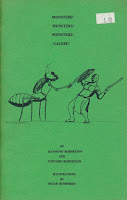As much attention as Game Wizards lavishes on conventions, there was more still before the manuscript was cut down to size. Convention tournaments in particular received more attention, and GenCon 1978 had a anecdote that began as follows: "Even the tournament was something of a shambles, with only one group surviving the second round: seven out of eight parties died to an illusion, mistaking for a teleporter something that was actually a deadly pit." This account follows Jon Pickens's description in A&E #39, which makes for something of a funny story, and lets us see with fresh eyes the encounter with Silussa the succubus and her vampire beau Belgos in D3 Vault of the Drow.




















